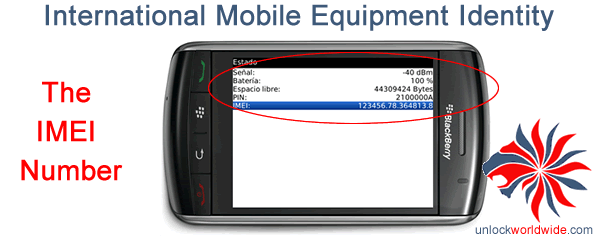 International Mobile Equipment Identity
International Mobile Equipment Identity
The IMEI is an assigned number (not always unique) which identifies most mobile phones and on GSM networks (ie. AT&T, Vodafone, TMobile, etc) it can be used to identify valid devices; preventing a stolen cellular phone from accessing the phones host network in the country of origin. Most frequently the manufacturer places a printed label inside the battery compartment (see above) but it can also be viewed on screen by entering *#06# on the keypad of most phones.
Note: A more comprehensive explanation is available on WikiPedia.
Digit Computation
The fourteen digit IMEI number (IMEISV has 16) is generated according to the Luhn Algorithm. This dictates that the check number will comprise
The Check Digit is a function of all other digits in the IMEI.:
- Starting from the right, double a digit every two digits (e.g., 7 ? 14).
- Sum the digits (e.g., 14 ? 1 + 4).
- Check if the sum is divisible by 10.
Conversely, one can calculate the IMEI by choosing the check digit that would give a sum divisible by 10. For the example IMEI 49015420323751?,
|
IMEI
|
4
|
9
|
0
|
1
|
5
|
4
|
2
|
0
|
3
|
2
|
3
|
7
|
5
|
1
|
?
|
|
Double every other
|
4
|
18
|
0
|
2
|
5
|
8
|
2
|
0
|
3
|
4
|
3
|
14
|
5
|
2
|
?
|
|
Sum digits
|
4 + (1 + 8) + 0 + 2 + 5 + 8 + 2 + 0 + 3 + 4 + 3 + (1 + 4) + 5 + 2 + ? = 52 + ?
|
||||||||||||||
